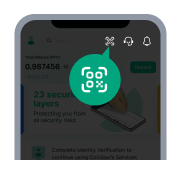Tesla Plans Driverless Ride-Hailing Services
By Chris Kirkham
Reuters – Tesla (NASDAQ:TSLA) CEO Elon Musk announced on Wednesday that the electric vehicle manufacturer plans to launch driverless ride-hailing services for the public in California and Texas next year, a move that may encounter regulatory and technical obstacles.
"We think that we'll be able to have driverless Teslas doing paid rides next year," Musk stated during Tesla's quarterly earnings call. The company currently has an app-based ride-hailing service available to its employees in the San Francisco Bay Area.
This statement reinforced Musk's earlier commitment made during Tesla's robotaxi reveal two weeks prior, where he stated he anticipates launching "unsupervised" self-driving capabilities in select Tesla models by 2025. The absence of a solid business strategy concerning the robotaxi initiative led to a drop in Tesla's stock price.
However, on Wednesday, Tesla reinstated some investor confidence with optimistic vehicle sales projections for next year.
In California, the company will face significant challenges in obtaining the requisite permits for providing completely autonomous rides to paying customers.
Waymo, a subsidiary of Alphabet (NASDAQ:GOOGL), has been offering paid rides in autonomous cars in the Bay Area, Los Angeles, and Phoenix, spending years amassing millions of miles in testing before acquiring its inaugural permits from the California Public Utilities Commission (CPUC), the authority overseeing ride-hailing operations.
The California DMV, which manages the testing and deployment of autonomous vehicles in the state, informed Reuters that Tesla last reported using its autonomous vehicle testing permit in 2019, which requires a safety driver.
Currently, Tesla does not have and has not applied for a driverless testing permit, according to the agency.
Tesla did not reply to a request for more details.
Regarding its employee ride-hailing service in the Bay Area, the CPUC mentioned that a permit isn't necessary, as employees aren’t classified as passengers.
During Tesla’s robotaxi event on October 10, Musk introduced a two-seat, two-door "Cybercab" devoid of a steering wheel and pedals, which would rely on cameras and AI for navigation.
On Wednesday, he recognized the possible challenges in California, admitting, "it's not something we totally control," but expressed confidence, stating, "I would be shocked if we don't get approval next year."
Texas presents a less challenging regulatory environment for autonomous vehicles compared to California; however, companies typically engage in extensive testing before launching paid services.
Tesla's Full Self-Driving (FSD) system, which underpins the company's robotaxi aspirations, has raised concerns among regulators.
Last week, the U.S. National Highway Traffic Safety Administration (NHTSA) initiated an investigation of 2.4 million Tesla vehicles equipped with FSD following four reported accidents, including one fatal incident in 2023.
Despite these challenges, the notion of Tesla initiating a robotaxi fleet led to a 2.3% drop in shares of ride-hailing companies in after-hours trading.

Comments (0)